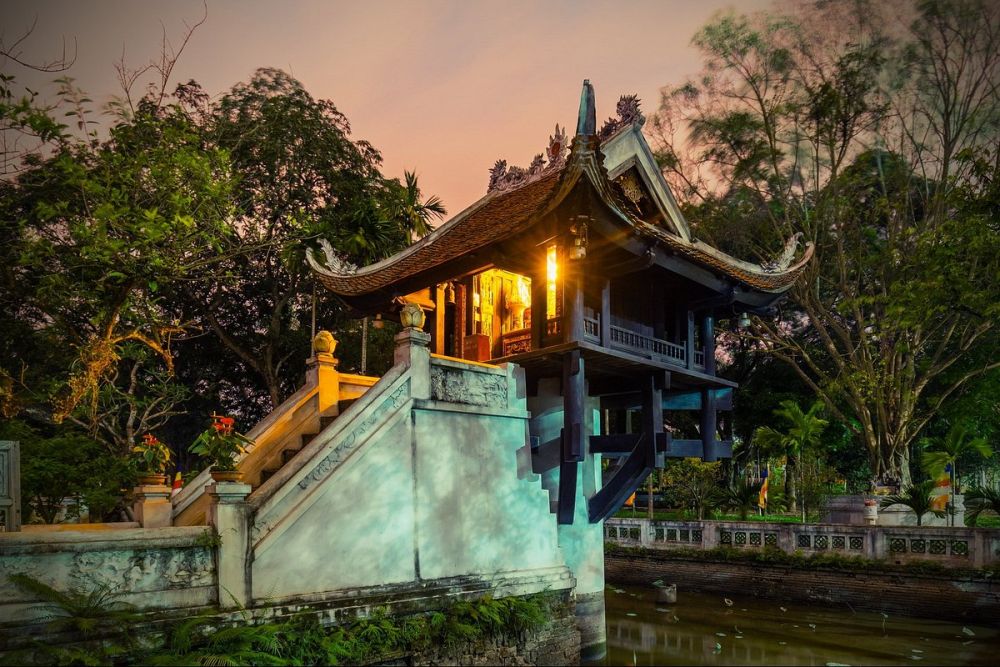

The One Pillar Pagoda, known as Chua Mot Cot in Vietnamese, is a historic Buddhist temple in Hanoi, the capital city of Vietnam. This iconic temple has a history that dates back to the 11th century and stands as a symbol of the city’s rich cultural and religious heritage.
The One Pillar Pagoda was originally built by Emperor Ly Thai Tong in 1049. According to legend, the emperor, who had no children, dreamt of the Goddess of Mercy handing him a son while seated on a lotus flower. Soon after, he married a peasant girl who bore him a son, and in gratitude, he constructed the pagoda, which resembles a lotus blossom, a symbol of purity rising out of a sea of sorrow as it is perched on a single stone pillar.
Throughout history, the pagoda has seen many changes, especially due to damages inflicted by wars. The most notable damage occurred in 1954 when the French Union forces destroyed the pagoda before withdrawing from Vietnam. It was quickly rebuilt and continues to be a cherished site.
As one of the most unique and revered sites in Hanoi, the One Pillar Pagoda has attracted visitors from around the world for decades. During the era of Vietnamese war and internal strife, access to the pagoda fluctuated, but in peaceful periods, tourism gradually increased. In the late 20th century, as Vietnam opened up, the pagoda became a must-see destination for international tourists seeking a glimpse into Vietnam's past.
The temple's distinct architecture and historical significance have played a significant role in promoting Vietnam's tourism. It has often been featured in travel literature and on postcards, contributing to the country’s image as a land of ancient wonders and spiritual depth.
In recent years, the trend in tourism at the One Pillar Pagoda, as with many cultural and historical sites around the world, has shifted towards more sustainable and responsible practices. Visitors are increasingly interested in authentic experiences that respect the local culture and the environment. There has also been a rise in digital tourism approaches, with virtual tours and augmented reality applications making the pagoda accessible to those who cannot visit in person. These advances have helped spread awareness and appreciation for the pagoda to a global audience.
Furthermore, the Vietnamese government has made significant investments in improving the infrastructure around Hanoi's historic sites, which includes the One Pillar Pagoda. Efforts to preserve the authenticity of the pagoda, as well as provide better facilities for visitors, exemplify the balance struck between conserving heritage and advancing tourism.
Today, the One Pillar Pagoda remains open to the public and is a site of pilgrimage for Buddhists from across Vietnam and the world. Its serene atmosphere and historical quandaries continue to draw visitors in large numbers. Tourists are advised to respect the sacred nature of the pagoda by dressing modestly and behaving in a quiet and respectful manner during their visit.
Visitors to One Pillar Pagoda can also explore other nearby attractions, such as the Ho Chi Minh Mausoleum, the Presidential Palace, and the Temple of Literature, making it an integral part of the Hanoi cultural tour.